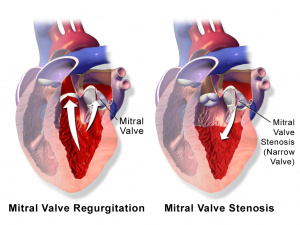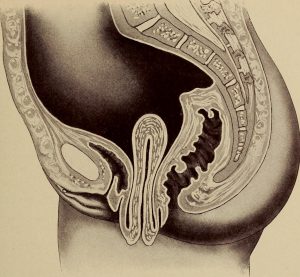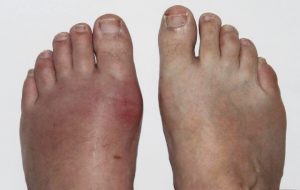Hey hey hey!
Last week was an “Open Lines’ show and thanks to the best listening audience in the world, I had more questions than I had time for answers. Here’s another edition of Quick Tips from the listener mail bag.
If you missed the show, click the Healthy Matters logo below and listen to it on your time, your terms, your device. I’m all accommodating like that.
I’ll cover heart valves, uterus prolapse, and gout – all questions from listeners. Remember these are quick tips only so not complete answers. It occurred to me that none of these topics are in area of expertise so I’ll be very general. As always, my medical thoughts are only for advice and information. You should see your own doctor for your own personal needs.
Heart valves – when should surgery be done?
Here’s a question from a listener. I should say right away that our entire Healthy Matters radio show on Sunday, August 7 is about heart valves. My guest will be Dr. Daniel DiBardino, a cardiothoracic surgeon. We’ll delve deeply into this topic. But in brief, here’s the question:
“I was told I will need valve replacement one day. The last test and exam showed it was leaking more and is enlarged in the last year. what does that involve? And what is the recovery time?”
Great question. Admittedly this is way outside my area of expertise (I’m an internist – a doctor for adult chronic diseases mostly) and not a surgeon, but here are the basics.
Heart anatomy

Wikiversity Journal of Medicine. DOI:10.15347/wjm/2014.010. ISSN 20018762.
The human circulatory system is a one-way bit of plumbing wonder. Our blood goes through a cycle:
- Oxygen rich blood from the lungs returns to the left side of the heart.
- The left side of the heart, which is the muscular pumping side, pushes the blood at high pressures to the body through the arteries. This is when our vital organs (brain, kidneys, liver, intestines . . . ) get the blood they need. (Curiously, the heart itself gets its blood supply from the coronary arteries during the relaxation – diastole – phase of the heartbeat.)
- Having been depleted of oxygen in the body and having picked up lot of waste products (like carbon dioxide), the blood makes its way through the venous system back to the right side of the heart. If the arteries from the left side are the rushing rapids, the veins returning blood back to the heart are a lazy river.
- From the right side of the heart, the blood is pushed the short distance back to the lungs, where the whole cycle repeats.
As you can see, this is a one-way system. We can’t have oxygen-poor blood going to the body, or blood backing up into the lungs, among other things. So we have 4 heart valves that open and close with every single heartbeat. (It is actually the closing of heart valves that make up the well-known lub-dub of our heartbeat.)
The valves are called mitral, aortic, tricuspid, and pulmonic.
If these valves fail to close all the way, blood goes backward (a situation called regurgitation). If they fail to open up all the way, blood can’t get through very well (called stenosis).
The valves that usually cause problems (shortness of breath and/or heart failure can result) are the aortic and mitral valves (the ones on the high-pressure left side). As I tell patients, internists like me use medications to treat a variety of conditions, but in the case of valvular disease, what you need is a surgeon, as the solution is either repair or replacement of the valve.
Here’s a picture of blood going the wrong way through the mitral valve (say my-tral valve). This is the valve between the left atrium and left ventricle. Blood leaking backward through this valve can go all the way back to the lungs – leading to shortness of breath. On the right is the same valve with stenosis in which it isn’t opening all the way.

Wikiversity Journal of Medicine. DOI:10.15347/wjm/2014.010. ISSN 20018762.
So to get back to the listener’s question . . . when your valve is leaky, we usually ask right away if you are having symptoms. There is a window of time when replacing the valve is best. This is usually very quickly after you develop symptoms but before you developing serious problems, especially heart failure (which is the big complication of leaky valves). Waiting until heart failure develops is too late.
Symptoms are usually shortness of breath, chest pain, or fainting. If you have any of those, see a cardiac surgeon. I’ll leave the remainder of the question about recovery to the experts in surgery. Sometimes the valve can be repaired. Sometimes the whole valve needs replacement with either a mechanical or bioprosthetic valve. Lots of options that are highly successful.
And listen to the show on Sunday, August 7. If you miss it, check the podcast (click the logo at the top of this post).
Uterine prolapse
Women, you can think your kids for this problem of which men are mostly clueless (since it can’t happen to them and we are not always so “in touch” with the issues faced by the women in our lives.)
Here’s the question from a listener:
“Prolapse uterus. Is that dangerous? Can that cause problems”
Short answers: Not usually. And sometimes.
Longer answer:
A woman’s uterus is situated in her pelvis just at the top of the vagina (and the cervix is the neck of the uterus). Prolapse is the condition in which the normal structures that hold the uterus in its usual position get weak and the uterus drops down into the vagina.
Here is an informative picture from 1905. Yup, they knew about it even then. This diagram shows a rather severe case of prolapse. The vast majority of women don’t get it this seriously – fortunately! Love these old medical diagrams that hold up so well over 100 years later.

Over time, the pelvic ligaments and muscles weaken. (This also can lead to incontinence issues). This is particularly true for women who had delivered their children vaginally. The decreased amounts of estrogen in a woman’s body also may contribute. Those two situations, along with the effects of a lifetime of straining (as with bowel movements) and the laws of physics (that dang gravity!) – all lead to the dropping of the uterus. Sometimes it can protrude all the way to the vaginal opening.
So is it dangerous? Not usually. Many women have mild uterine prolapse and have no symptoms at all. No problem and nothing needs to be done.
However, some women experience a number of symptoms. Among them are a heavy and/or uncomfortable sensation in the vagina, urinary incontinence, troubles with bowel movements, sexual discomfort, and even the situation where the uterus protrudes out where it can be seen.
For women who have these symptoms, it is time to see a doctor. I recommend a urogynecologist – a specialist in women’s reproductive and urinary issues. Your doctors may prescribe medications (usually for incontinence), prescribe pessaries (devices placed inside you to hold the uterus in place), or in symptoms are severe enough – surgery.
Last topic: gout and foot pain
One listener raised the following question:
“My wife is having top of her foot pain. She has had gout in the past. She also at times wears insoles for plantar fasciitis. Lately she has not been wearing the insoles. I suggested taking medication first. What do you think?”
Foot pain can be due to about a bazillion different things. Yes, bazillion is the correct medical term! This listener is on to something, however, as he brings up both gout and plantar fasciitis, which are both common causes of foot pain. A few other causes are metatarsalgia, Morton’s neuroma, neuropathy. And about a bazillion others.
Gout has been common for hundreds of years and lots of famous people suffered from it. Like this guy:


Photo credit: Gonzosft
Gout is an inflammatory arthropathy due to monosodium urate crystals leading to inflammation, intense pain, redness, swelling. The whole episode usually comes on very suddenly. Curiously, a common joint to be affect is at the base of the big toe (so common that it has its own name, podagra, as in this picture at left). But just about any other joint can be infected, including those in the middle of the foot, as in this question.
Fortunately, gout is treatable with medications (simple NSAIDS like ibuprofen are really effective) that are available at the drugstore or by prescription. Some people get recurrent gout and need a daily medication to suppress the uric acid in their blood. Those folks would sometimes do well to avoid lots of foods with purines in them (where gout crystals come from) like red meats, seafood, and beer. (Everything I like. Bummer if I ever get gout).
By the way, urate crystals are beautiful when seen under a microscope. I distinctly remember that from medical school. Check them out in this picture. The pretty yellow crystals are the beasts that cause the agony of gout.
![By Bobjgalindo (Own work) [GFDL (http://www.gnu.org/copyleft/fdl.html) or CC BY-SA 4.0-3.0-2.5-2.0-1.0 (http://creativecommons.org/licenses/by-sa/4.0-3.0-2.5-2.0-1.0)], via Wikimedia Commons](https://healthymatters.org/wp-content/uploads/2016/08/Fluorescent_uric_acid-300x225.jpg)
By Bobjgalindo (Own work) [GFDL (http://www.gnu.org/copyleft/fdl.html) or CC BY-SA 4.0-3.0-2.5-2.0-1.0 (http://creativecommons.org/licenses/by-sa/4.0-3.0-2.5-2.0-1.0)], via Wikimedia Commons
My suggestion to the listener who asked this question is to think about the history of the symptoms:
- Did they come on rather fast? Think gout.
- Is there redness or swelling? Think gout.
- Is the pain very intense? Even the bed linens can hurt when lying loosely on the foot of a gout patient. Think gout.
- Does ibuprofen give relief in just a few days? Think gout.
On the other hand . . .
- Is the pain persistent over many, many days? Even weeks? Even months? Think plantar fasciitis.
- Is the heel involved? Think plantar fasciitis.
- Does ibuprofen give minimal to no relief? Think plantar fasciitis.
- Are you on your feet a lot? Think plantar fasciitis.
Of course, it could be neither of these two! But those are some starting points.
So those were 3 completely unrelated topics. Heart valves, uterine prolapse, and foot pain. I hope you learned something.
Visit me at the Minnesota State Fair!
I want to keep reminding people to come visit the WCCO radio booth at the Minnesota State Fair, both Sundays at 7:30 (August 28 and September 4). Under the shadow of the giant slide, I’ll be doing the radio broadcast LIVE with my good friend Denny Long. I’d love to meet you and the Fair is downright peaceful on a Sunday morning. And you can still get all the food you want at that hour! Come visit!

State Fair 2013
